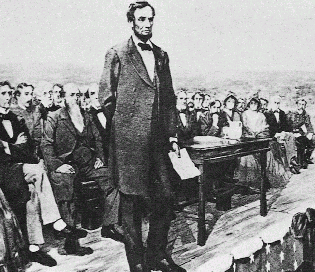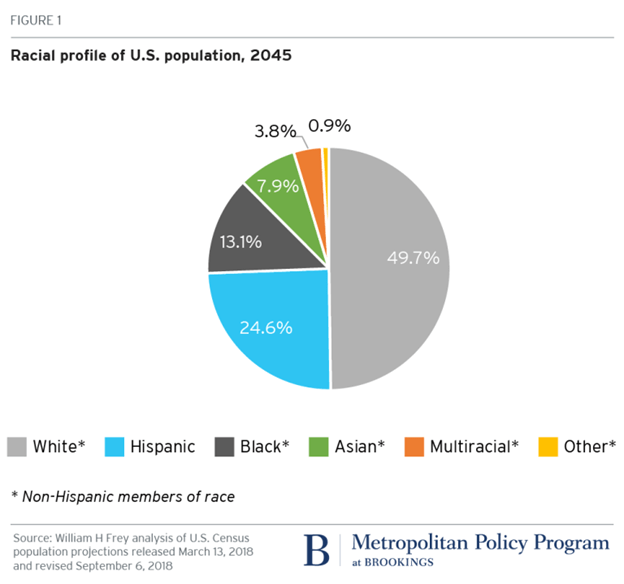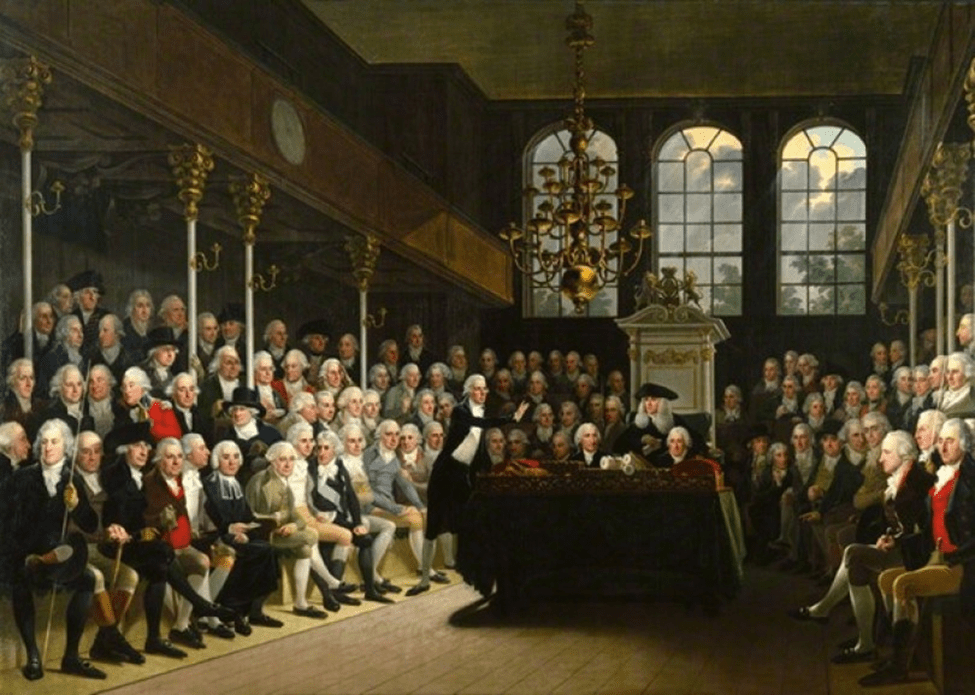American democracy is broken. It’s very future is in doubt. I want to discuss two of the major issues that need to be addressed—1) the inability of the national government to produce action at the national level on critical, in some cases existential, issues and 2) the increasing threat, that in contraindication to Lincoln’s memorable phrase that “government of the people, by the people and for the people” shall not perish from the earth, there is evidence that it is perishing before our eyes.

The Failure to Deliver. Gridlock is a feature, not a bug, of American democracy. The framers of the US Constitution purposely designed the American Government to limit the ability of a majority to run roughshod over the rights of the minority. Thus, they designed a federal government that gives a great deal of power to the states (The Tenth Amendment reads, “The powers not delegated to the United States by the Constitution, nor prohibited by it to the States, are reserved to the States respectively, or to the people”). They also followed Montesquieu’s idea of “separation of powers,” by creating legislative, executive and judicial branches, limiting the power of each. The Constitution also created a bicameral legislative body, requiring all laws to be passed by both Houses. Thus, inaction was preferred to rash action.
As Sarah Binder wrote in 2000, “Gridlock is not a modern legislative invention. Although the term is said to have entered the American political lexicon after the 1980 elections, Alexander Hamilton was complaining more than two centuries ago about the deadlock rooted in the design of the Continental Congress. In many ways, gridlock is endemic to our national politics, the natural consequence of separated institutions sharing and competing for power.”

Today, the Congress is unable (or unwilling) to pass meaningful legislation in three “hot button” areas –climate change, gun control, and immigration.
As an example, let’s look more carefully at gun control. When asked, “How strict should gun laws be, 57% of those polled believed laws should be stricter, while 9% believed regulations should be reduced.7
Gun Control. The history of federal gun control legislation is quite limited:
- In 1968, following the assassinations of Martin Luther King and Robert Kennedy Congress passed the Gun Control Act (GCA) of 1968. That act 1) required licenses for interstate sales and regulated the importation of firearms.
- In the 1980s Congress passed a series of laws stiffening the penalties for using a firearm when committing various drug crimes.
- In 1986, Congress took a step backward in passing the Firearms Owners’ Protection Act to ensure that the GCA did not “place any undue or unnecessary Federal restrictions or burdens on law abiding citizens,” but it opened many loopholes through which illegal gun traffickers could slip.
- In 1993, Congress passed the Brady Handgun Violence Protection Act which requires criminal history background checks by the Federal Bureau of Investigation (FBI) and state agencies on persons who attempt to purchase a firearm from a licensed dealer.
- In 1994, Congress passed the Violent Crime Control and Law Enforcement Act which made it unlawful, with certain exceptions, to manufacture, transfer, or possess semiautomatic assault weapons. The law expired after ten years.
Now all this might seem to you like small cheese; that’s because it is. By and large the effects on homicides, suicides and mass shootings of these laws are minimal or non-existent. This may be because there hasn’t been a great deal of research on the topic or, as the Rand Corporation noted, these laws affect the flow of new guns into the system, or the legal ownership of purchased weapons. They don’t deal with the extremely high number of guns already owned by Americans, and, thus, have limited impact. See the Rand Corporation’s article for a more nuanced take on what works and what doesn’t. Because our politics makes it impossible to enact serious gun control legislation, we are doomed to have the highest rates of gun deaths among advanced countries in the world (12.25 per 100,000 populations compared to, for example, 2.05 in Canada). Despite years of high levels of gun deaths and a number of high-profile mass shootings, Congress is unable to pass stricter gun control.
The threat to American Democracy. Donald Trump’s assault on our democracy has been well documented. Among other things, he has
- Said he supported many right-wing armed militia groups (including armed protesters who stormed the Michigan state legislature on April 30, 2020).
- Said he would not necessarily accept election results (July 9, 2020 and September 23, 2020).
- In the last days of his presidency he refused to concede the election and began to spread “the big lie,” that he actually won the election, and that it was stolen from him.
- Consistently refused to denounce violent supporters including armed protesters in Charlottesville in January 2020, armed protesters who stormed the capitol in Michigan in April 2020, white nationalist-led protests in Wisconsin in August 2020, and refused to condemn white supremacist organizations such as the Proud Boys.
- He asked Justice Department officials to state that the 2020 election was rigged so that he could plausibly ask Georgia officials to overturn result.
- He supported “Stop the Steal” rallies and told his supporters that the “fraudulent” election would be overthrown.
- He pressured Georgia Secretary of State Brad Raffensperger to change the Presidential votes saying, “What I want to do is this. I just want to find 11,780 votes, which is one more than [the 11,779 vote margin of defeat] we have, because we won the state.”
- Supported a major protest on January 6, 2021 to pressure lawmakers not to certify the votes of the electoral college.
- Told Vice President Pence that he has the authority to reject slates of electors which have been elected through voter fraud and send those votes back to the state legislatures.
Insurrectionists assault the U.S. Capitol, January 6, 2021. Getty Images
The assault on the Capitol. It is uncertain how much responsibility Trump bears for the January 6 insurrection, but it is clear that he encouraged supporters to come to Washington, and that he riled up his supporters, saying
“We’re going to walk down to the Capitol– and we’re going to cheer on our brave senators and congressmen and women and we’re probably not going to be cheering so much for some of them.” and
“You’ll never take back our country with weakness. You have to show strength, and you have to be strong.” and
“Something is wrong here, something is really wrong, can’t have happened and we fight, we fight like hell, and if you don’t fight like hell, you’re not going to have a country anymore.” and
“So we are going to–we are going to walk down Pennsylvania Avenue, I love Pennsylvania Avenue, and we are going to the Capitol, and we are going to try and give–the Democrats are hopeless, they are never voting for anything, not even one vote but we are going to try–give our Republicans, the weak ones because the strong ones don’t need any of our help, we’re try–going to try and give them the kind of pride and boldness that they need to take back our country. So, let’s walk down Pennsylvania Avenue.”
The aftermath. In May, a poll taken by Reuters/Ipsos found that 61% of Republicans and 30% of all Americans agree with the statement, “The 2020 election was stolen from Donald Trump.” Because of the “rigged” election, a number of states have enacted voter laws which, depending on your point of view, have increased voting security or increased voter suppression. Some of these laws empower state legislatures to review election outcomes. For example, the new Georgia law removes the Secretary of State from the State Election Board and creates a review mechanism dominated by the state legislature. Many of the reforms being enacted by the states follow the Georgia model and raise the ability of partisan legislatures to challenge election results.
Many observers have said that while the “big lie” and its aftermath threatened our democracy, the real takeaway is that the “guardrails of our democracy” held fast. Elaine Kamark detailed the various major institutions of American democracy (Congress, judicial system, federalism, the press and the civil service) and found these were not weakened by Trump. However, the real institution being assaulted by Trumpism is our election system and its tradition of the peaceful transfer of power from one set of officeholders to the next. Trump has continually called the 2020 election rigged and challenged the results. The only reason he was unsuccessful was the fact that state officials like Brad Raffensperger, Arizona Governor Doug Ducey and Vice-President Pence stood up to him. On the infamous day of January 6, 2021, six Republican Senators and 147 Republican members of Congress voted against certification of the election. What would have happened if the GOP controlled one or both houses of Congress?
The only reason the “guardrails” of American democracy held was the courageous stands of a few people, mostly Republicans. But this was a near miss. Our institutions didn’t protect us; courageous people of impeccable integrity did. The current trend to replace non-partisan election officials with partisan legislators threatens the future of our democracy.




































